There is a lot of history in Moor End but the village is not well designed for a history walk. The road is narrow, there are few pavements and there are lots of cars. And to make matters worse, when the cars are not being driven fast they are parked on the pavement. Still, the history was irresistible. We decided to organise. We bought some hi-vis jackets; we decided to split everyone into small teams for walking up the main road and we asked everyone to register their interest in advance. So far, so good. The Health and Safety Executive would have been proud of us.
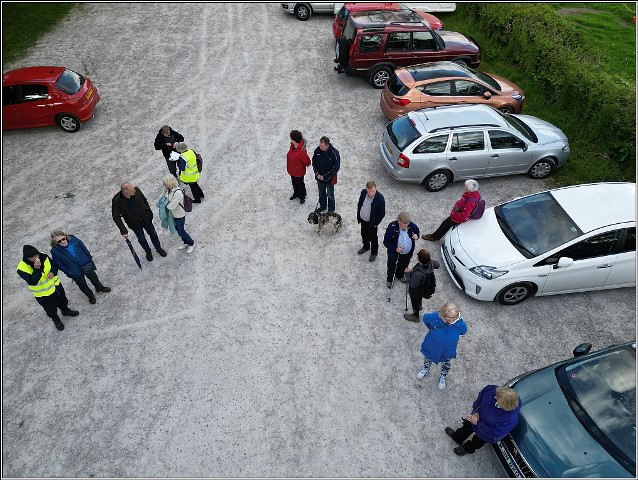 Meeting up - a drones view
Meeting up - a drones view
Unfortunately, it didn’t work out like that. 23 people registered their interest but 35 people turned up. Too many to hear what the leader was talking about. If only we had known the level of interest we could have arranged a second walk on a different evening. Still, we could not turn people away so we carried on as planned with apologies to all those present that the experience could not be as pleasant as we had hoped.
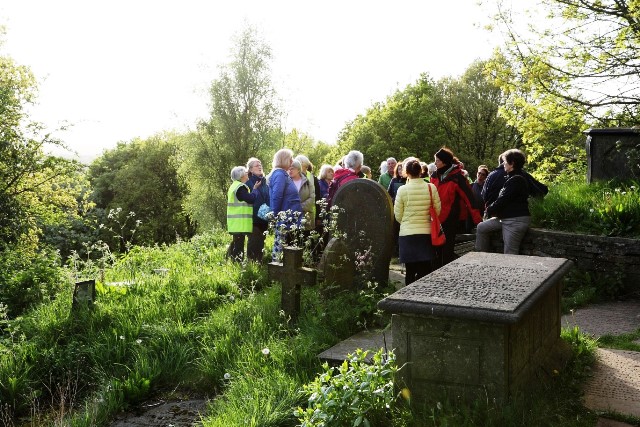
No problems at first. Into the churchyard to admire the view; or at least have some of the key geographical features pointed out. That, plus a quick romp through history from the Ice Age to the Middle Ages. Then back to the car park to take us up to the IndustrialRevolution, via the school room in the churchyard, the stocks and the mason’s grave.
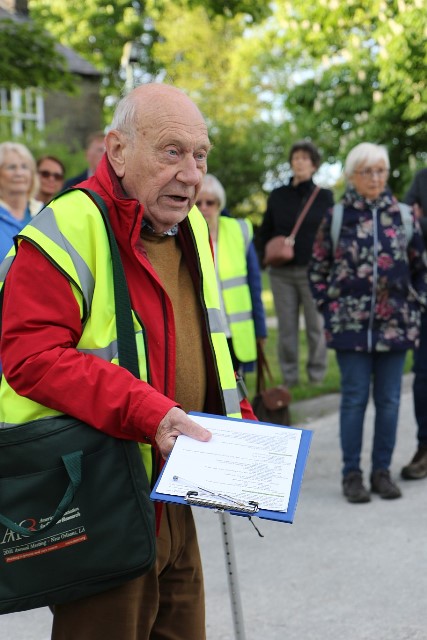
The walk proper started down the hill to Brookbottom. Where? That’s the huddle of houses in the hollow just off Church Lane. In fact wewalked down was the only road before Church Lane was built. A brief history of the Devonshire showed that it was more entitled to the name “Oddfellows” than the actual Oddfellows itself. Then we launched ourselves, complete with hi-vis vests, up Moor End Road. Moor End was very much a working village. No big houses, no grand churches, no impressive public buildings. Instead it appears to be a motley collection of cottages and houses, most of which have been changed or converted or modified over time, interspersed with two chapels and a Sunday school and, of course, two public houses. However, it is the detail that provides the fascinating story of this first industrial settlement in our area.
The mills have largely gone. We know roughly where they were but there are few traces on the ground except for the largest of them all - Dove Bank Mill. Even this has largely disappeared but we saw the two entrances and peered over the wall to marvel at the site. How could such a large mill have been built in such a cramped location? There were some signs of the mill but you had to know where to look. The bobbin mill attached to the factory. The smithy over the road from the main buildings and the mill manager’s house, up the hill but still near enough to know all that was happening.
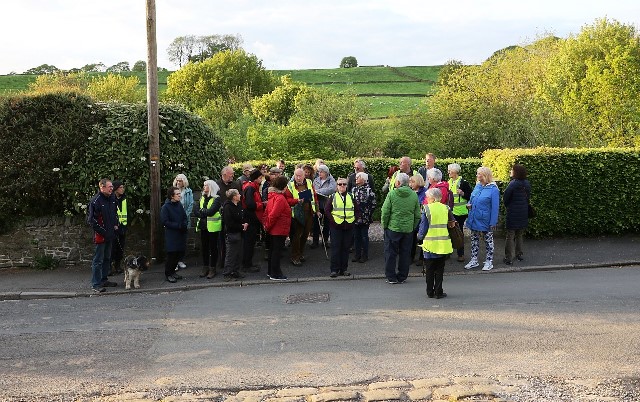 Yellow is so this season
Yellow is so this season
The houses had seen many changes over the years. Three-story weavers’ cottages dependent upon the mill for their raw material. Back-to-back houses built for mill workers but now converted into larger dwellings. There are no shops in Moor End any more but there were many in its heyday. At one time the truck shop dominated the commercial life of the village and it still looks imposing - three and a half stories high with openings at every level and a beam mounted to support the block and tackle. However, the various *Truck Acts gradually ate away at its dominance and smaller stores offered competition.
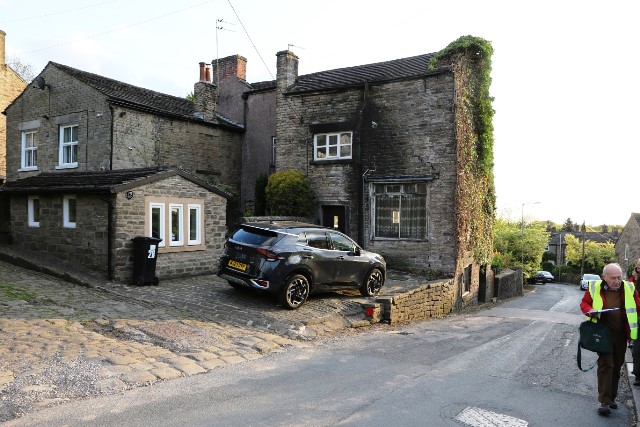 The old Truck Shop on May night in 2023
The old Truck Shop on May night in 2023
By 1840 the settlement had:
- 2 Butchers
- 2 Boot & Shoe makers
- 3 Tailors
- 2 Blacksmiths
- 2 Joiners
- 4 General shops
- 1 Post Office
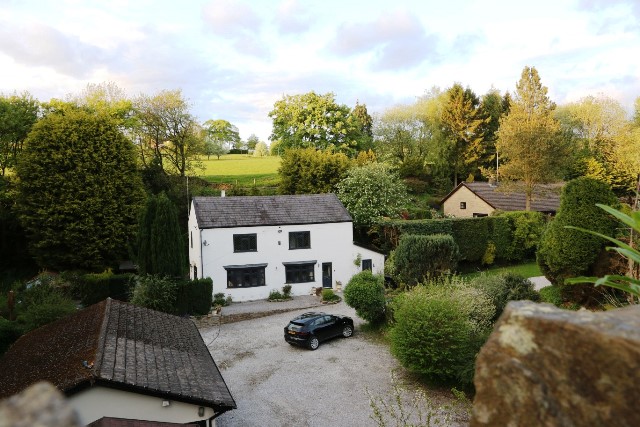 2006 viewAnd these outlets changed their location frequently. We know of at least five houses that housed the post office and three addresses that once were pubs are now private houses.
2006 viewAnd these outlets changed their location frequently. We know of at least five houses that housed the post office and three addresses that once were pubs are now private houses.
The important buildings are still identifiable. The Wesleyan Chapel and the Primitive Methodists who thought that the Wesleyans were dangerously papist. The Methodist Sunday school which preceded both the chapels. All three now serving either domestic or secular purposes. But not the pubs. The two surviving pubs are still pubs and have survived well. The mill owner’s house is still in existence but unfortunately we could not get to see it as it was at the end of a long, curving private drive. Perhaps next time we might be invited to see it. Our visit certainly aroused a lot of interest and not just because of the fashion statement we were making with our hi-vis vests. You could join us next time. Everyone is welcome but please tell us you are coming, don’t just turn up.
Neil Mullineux - May 2023
Photos - Hilary Atkinson & David Burridge
Drone photo - Chris Simmonds
The Society's Waller book, price £2.00 is a detailed account of Dove Mill.
*Certain employers paid their workmen in goods or in tokens, which could be exchanged only at shops owned by the employers – the so‐called truck system. The Truck Act of 1831 listed many trades in which payment of wages must be made in coins. It was amended by an Act of 1887, which extended its provisions to cover virtually all manual workers. In 1896 a further Act regulated the amounts that could be deducted from wages for bad workmanship. The Payment of Wages Act of 1960 repealed certain sections of the Truck Acts to permit payment of wages by cheque."
Wikipedia Truck Wages









